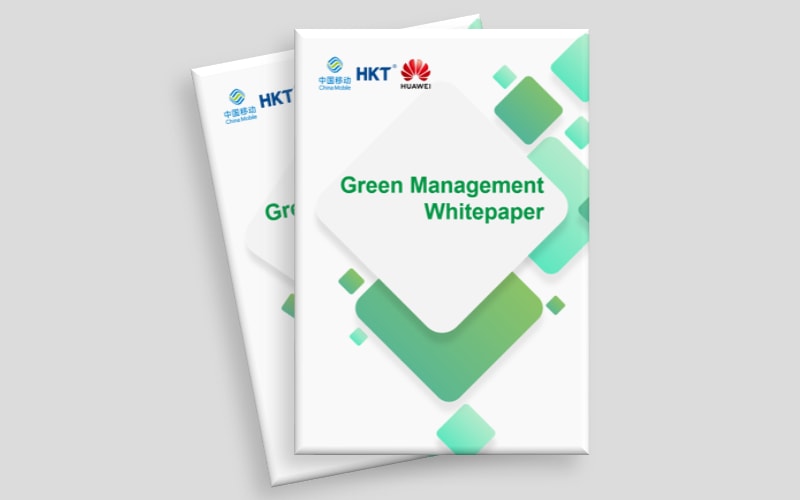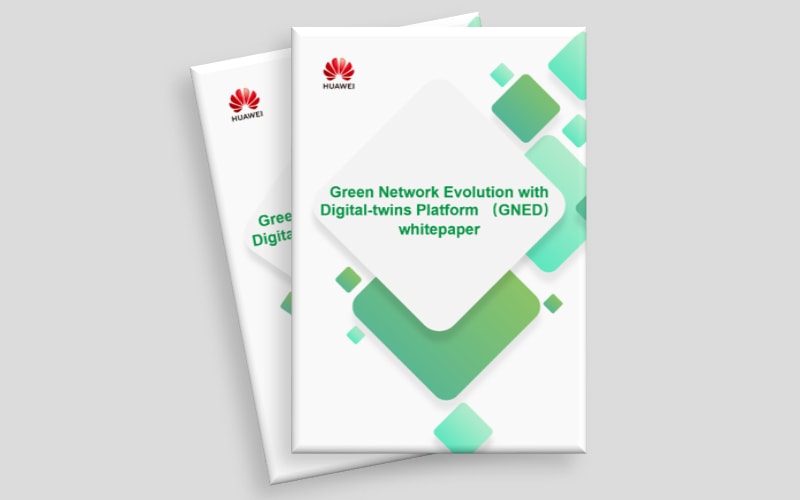Use Cases
Building greener homes with eAI optical modems
AI-powered home ONTs can provide next-gen services & still remain green.


By Zhang Xiaolin, Deng Feifei, Senior Marketing Manager, Transmission & Access Domain, Huawei
Most home devices are Wi-Fi-enabled, with Wi-Fi networks now a key part of home infrastructure for every family. And that’s especially true this year with online education and online office applications used in millions of households.

VR education will soon enter the home – and with good reason: studies show that students' attention and beta brain waves last six times longer in a VR environment than in a traditional learning environment. Indeed VR may become standard for language classes in the next five years, with VR- and AI-powered digital virtual avatars likely to be the future direction of language teaching.
Gaming has also evolved – from the first stand-alone consoles to mobile games, web games, client-hosted games, to today's massively popular online games. Gaming is imposing higher and higher requirements on the Internet, as online games' user numbers and scale rapidly expand. Having amassed 350 million players as of May 2020, Fortnite, for example, places very stringent latency requirements on the network, because it needs high data read and write speeds given the huge numbers of players online simultaneously.
The key node that connects all home services to the network is the optical modem, aka the optical network terminal (ONT). And while we all enjoy the convenience of technology, most people are likely to agree that this enjoyment shouldn’t come at the expense of the environment. We’re paying more attention to product size, function, energy-saving capabilities, safety, reliability, and whether devices and their materials are toxic-free and safe.
This has in turn increased the requirements on the design of these products. The electronic components, source materials, and power consumption must pass international environmental protection certifications like WEEE and RoHS to guarantee the quality of the entire product.
Huawei started researching and designing its optical modem back in 2007 and has spent the 13 years since developing and innovating the technology. We’ve shipped more than 250 million units to over 150 countries and regions around the world and expanded the range of technologies supported by the ONT: from simple Layer 2 forwarding functions, to Layer 3 forwarding functions, to 4K and VR services. Today, the product supports the latest embedded AI (eAI) intelligent service, which is capable of accelerating multiple services.
We have continuously improved the product's integration density within its effective area while limiting and reducing its power consumption. This has been driven by our deep integration of green concepts and goals for many years, and our commitment to exploring solutions for reducing energy consumption. We’re making constant advancements in power supply circuits, adapters, function modules, components, and other technology areas. It also includes product planning, structure design, production, and through the introduction of intelligent algorithms. This is our commitment to environmental protection within our product responsibility.
OptiXstar V Series: Three levels of energy-saving
With the leap from Wi-Fi 5 GPON + 2x2 dual-band to Wi-Fi 6 XGPON + 2x2 dual-band, the overall improvement in the performance of home ONTs has increased power consumption. Customers who don’t understand the characteristics of Wi-Fi 6 tend to believe that because its performance is better, it must emit more radiation. Therefore they want ONTs to enter deep hibernation when not in use, such as overnight, so that radiation is minimized before it connects immediately when they need to use it. This imposes high requirements on any energy-saving solution for the product. Such a solution needs to be intelligent.
Enter the Huawei eAI ONT
In 2019, Huawei launched the next-gen OptiXstar series of eAI ONTs. These products boast three levels of energy-saving measures. Maximum energy-saving is achieved across the whole device, from the internal software to the hardware to the exterior, at the algorithm, module, and structural level. Application Performance Management (APM) intelligent-scheduling achieves smart scenario-based energy-savings with peak and off-peak sleep modes. The superior product design realizes green communications energy conservation and emissions reduction, ensuring user service experience while delivering a high-quality lifestyle.
Data shows that Huawei's latest OptiXstar series of gigabit ONTs can save each customer 38 kWh of electricity per year, thanks to the smart hibernation technology that takes its energy consumption levels down to 30 percent less than similar products and 20 percent lower than the level set out by the European Union's Code of Conduct on Energy Consumption Broadband Equipment Version 7. An ONT running 24 hours a day would consume 0.47688 kWh of electricity a day, or 174 kWh of electricity a year. The smart hibernation technology of the OptiXstar gigabit ONT reduces this to 0.37 kWh or 135.05 kWh a year, saving households 38.5 kWh per year. Converted to carbon emissions, this would equate to 24 kg of CO2, which is equivalent to the carbon dioxide absorbed by a single mature tree. OptiXstar ONTs' energy-saving function helps families to metaphorically plant a tree a year and contribute to saving the natural environment.

eAI ONT for greener homes
Home broadband users are shifting expectations from a broadband experience to an ultimate service experience. As the number of full-4K users and services grow, online education, online office, cloud gaming, and cloud VR are entering the “experience level” of development. Huawei's OptiXstar V series of eAI ONTs uses 100-percent hard forwarding, Wi-Fi dual acceleration, and eAI smart identification capability of up to 1 million packets per second, improving the entire home broadband service experience.
In a typical home, Huawei's eAI ONT starts work early in the morning as the first data packets are transmitted: At 9 am, the kids start online classes in a quiet home environment, with the ONT serving as a silent enabler. As it's then off-peak for broadband service traffic, the ONT stays in hibernation mode.
By 6 pm, everyone is back after a busy day. Dad is relaxing playing VR games with his daughter, while Grandpa watches their virtual battle. Grandma is exercising to a live stream of dancing on an IPTV broadcast. Mom is watching online videos while helping the family’s youngest child with his homework. This type of lively family scene signals the peak period for broadband services, with the ONT operating at full speed in the background.
At 10 pm, the whole family gets ready for bed, with just mom and dad left watching videos and using social media. As broadband service traffic gradually decreases, the ONT slowly adjusts back into hibernation mode after working at full speed. By midnight, the whole family is asleep and broadband service traffic has fallen to zero. After transmitting the last data packet, the eAI ONT has also completed its day's work and enters deep sleep mode.
Gigabit eAI ONTs enhance the family's real-time service experience of the home network as well as improving their experiences and making life more convenient. Our goal is to facilitate greener and more livable environments for people to live in. We’ve invested extensive resources in our products' technology, quality, and energy conservation capabilities, continuing to reduce the power consumption of ONTs in the home network and maximize energy saving.
With eAI ONT, Huawei hopes to provide a greener home gateway to the Internet and make the home a greener place.
- Tags:
- AI
- Optical Networks
- Environment





